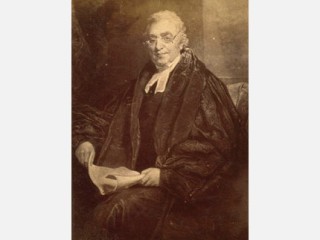
Andrew Bell biography
Date of birth : 1753-03-27
Date of death : 1832-01-27
Birthplace : St. Andrews, Scotland
Nationality : Scottish
Category : Famous Figures
Last modified : 2010-12-03
Credited as : Educator, and Anglican priest, developer of the Madras
The Scottish educator Andrew Bell was the developer of the Madras, or mutual instruction, system of education, which enjoyed great vogue in the first 4 decades of the 19th century, especially in schools attended by the poor.
Andrew Bell was born in St. Andrews on March 27, 1753. In 1769 he entered St. Andrews University, where he excelled in mathematics and natural philosophy. After serving from 1774 to 1781 as a private tutor in the Virginia Colony, he returned to Scotland, where he continued tutoring and was ordained a clergyman in the Anglican Church.
Bell sailed for India in 1787. He was appointed superintendent of the Madras Male Orphan Society, where he developed the Madras system, which became his lifework and made him a leading figure in English education.
At the Madras school little progress was being made because neither the teachers nor the pupils showed any interest in learning. One day Bell came upon a local school where the native children were learning the alphabet by writing with their fingers in the sand. Fascinated by both the method and the zest of the children, Bell tried to introduce sand boards into his school, but the teachers resisted. Never easily thwarted, Bell chose an advanced student to teach the others. This use of students to instruct other students was the heart of the Madras system.
In 1791 Bell returned to London and later published a pamphlet, An Experiment in Education (1797), discussing his methods and views of the Madras system. This plan received little public notice until Joseph Lancaster opened a school which was conducted in accordance with Bell's principles but improved upon the system. By the turn of the century the Madras system, also known as the Bell-Lancaster system, had become popularized, and Bell was asked to organize a school system in Dorset. In 1811 he became superintendent of the National Society for Promoting the Education of the Poor in the Principles of the Established Church.
The successful spread of the Madras system was due to a number of factors. It was inexpensive, was relatively efficient, and appeared at a time when interest in social reform, especially the education of poor children, was at a height in England.
Though most famous for the Madras system, Bell was also interested in the abolition of corporal punishment of children, more active learning situations in schools, and other practices far ahead of his time. On Jan. 27, 1832, after a lifetime of service to education, Bell died, and he was buried in Westminster Abbey.
The best biography of Bell is John Miller Dow Meiklejohn, An Old Educational Reformer: Dr. Andrew Bell (1881), which contains a discussion of Bell's life, educational system, and influence, as well as brief passages from his published works. The Life of Reverend Andrew Bell (3 vols., 1844), is a dry catalog of trivial information; the first volume is by Robert Southey, and the second and third by his son, Charles Cuthbert Southey. Background studies which briefly discuss Bell are John W. Adamson, English Education, 1789-1902 (1930), and Mary Sturt, The Education of the People (1967).
















